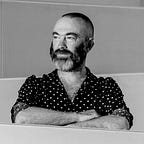Architecture a Self-Limiting Definition
What is the frame by which we define our role as an architect, or indeed what is the frame presented to the public? What are the assumptions made in and around the role of an architect? It’s not only the dictionary that defines architects as designers of buildings, the profession as a whole does this too.
Architects do this…
“We design buildings.”
Architects say this…
“Would you like us to design your building for you?”
That might be fine, however, the thing here is that ultimately the profession’s role in the realisation of buildings is becoming more and more narrowly defined. This marginalisation is not only problematic for the ego of the profession, and arguably for the quality of the buildings delivered, but also for the sustainability of architecture as a profession. The definition of architecture, by the profession, is becoming self-limiting.
What if instead, the profession was to heed the call of John Thakara to “evolve from being the individual authors of objects or buildings, to being the facilitators of change amongst large groups of people”? How then might architects better define the practice of Architecture and what they do as an Architect?
First published on Redshift Architecture & Art
Michael is the founder of unmeasured, supporting architects in their practice through coaching, workshops and community.
Helping architects find their desire lines in practice.
